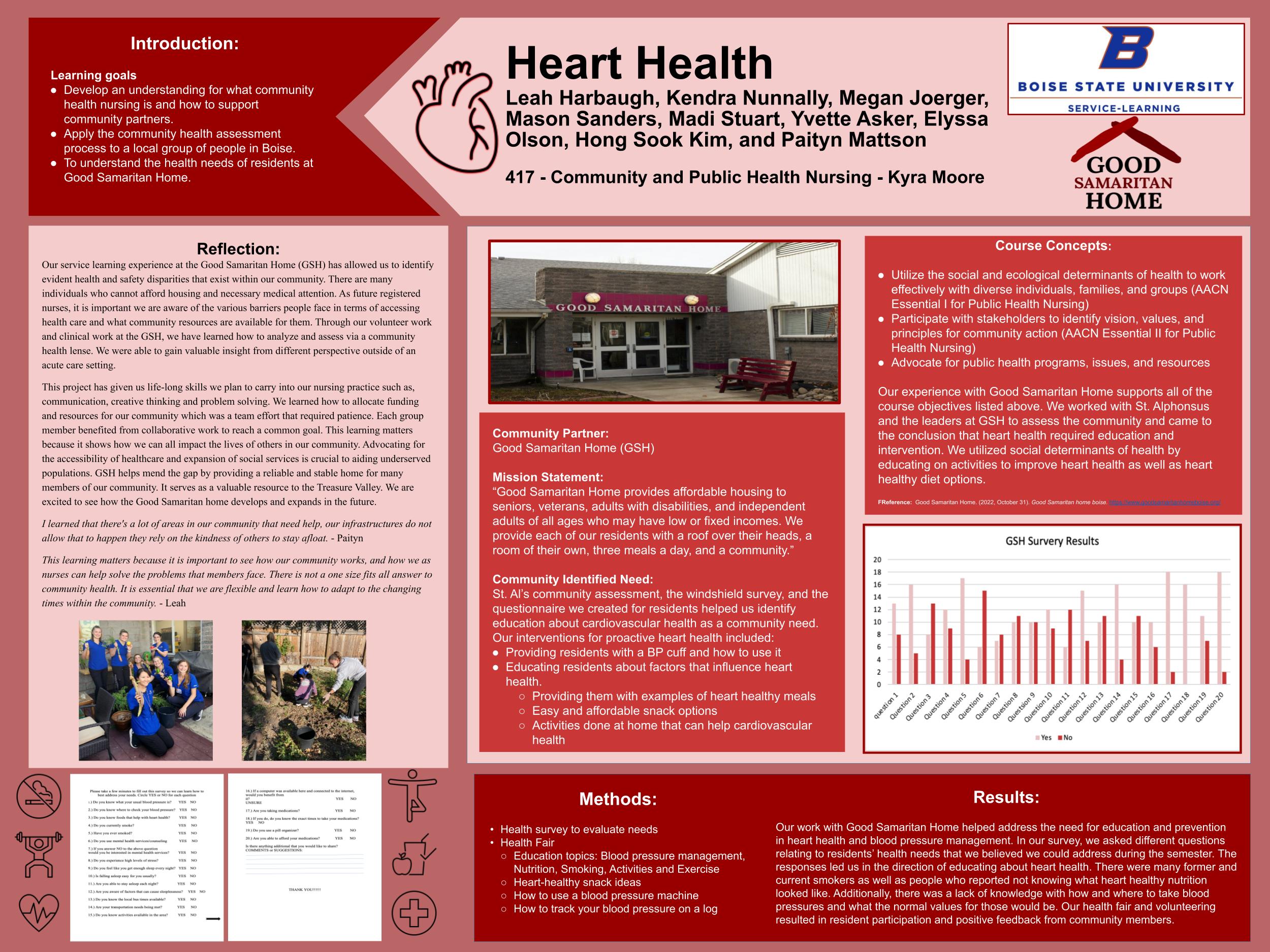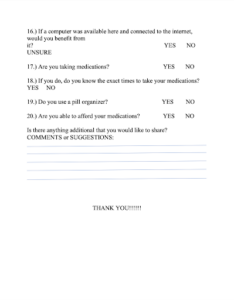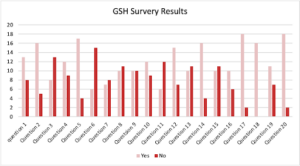Leah Harbaugh, Kendra Nunnally, Megan Joerger, Mason Sanders, Madi Stuart, Yvette Asker, Elyssa Olson, Hong Sook Kim, and Paityn Mattson
Kyra Moore RN & Jeannine Suter, MSN, BSN, RN – NURS 417
Good Samaritan Home

Introduction
Learning Goals:
- Develop an understanding for what community health nursing is and how to support community partners.
- Apply the community health assessment process to a local group of people in Boise.
- To understand the health needs of residents at Good Samaritan Home.
Community Partner: Good Samaritan Home (GSH)
Mission Statement:
“Good Samaritan Home provides affordable housing to seniors, veterans, adults with disabilities, and independent adults of all ages who may have low or fixed incomes. We provide each of our residents with a roof over their heads, a room of their own, three meals a day, and a community.”
Community Identified Need:
St. Al’s community assessment, the windshield survey, and the questionnaire we created for residents helped us identify education about cardiovascular health as a community need. Our interventions for proactive heart health included:

- Providing residents with a BP cuff and how to use it
- Educating residents about factors that influence heart health.
- Providing them with examples of heart healthy meals
- Easy and affordable snack options
- Activities done at home that can help cardiovascular health
Reflection
Our service learning experience at the Good Samaritan Home (GSH) has allowed us to identify evident health and safety disparities that exist within our community. There are many individuals who cannot afford housing and necessary medical attention. As future registered nurses, it is important we are aware of the various barriers people face in terms of accessing health care and what community resources are available for them. Through our volunteer work and clinical work at the GSH, we have learned how to analyze and assess via a community health lens. We were able to gain valuable insight from different perspective outside of an acute care setting.
This project has given us life-long skills we plan to carry into our nursing practice such as, communication, creative thinking and problem solving. We learned how to allocate funding and resources for our community which was a team effort that required patience. Each group member benefited from collaborative work to reach a common goal. This learning matters because it shows how we can all impact the lives of others in our community. Advocating for the accessibility of healthcare and expansion of social services is crucial to aiding underserved populations. GSH helps mend the gap by providing a reliable and stable home for many members of our community. It serves as a valuable resource to the Treasure Valley. We are excited to see how the Good Samaritan home develops and expands in the future.
“I learned that there’s a lot of areas in our community that need help, our infrastructures do not allow that to happen they rely on the kindness of others to stay afloat.” – Paityn
“This learning matters because it is important to see how our community works, and how we as nurses can help solve the problems that members face. There is not a one size fits all answer to community health. It is essential that we are flexible and learn how to adapt to the changing times within the community.” – Leah
Course Concepts
- Utilize the social and ecological determinants of health to work effectively with a wide range of individuals, families, and groups (AACN Essential I for Public Health Nursing)
- Participate with stakeholders to identify vision, values, and principles for community action (AACN Essential II for Public Health Nursing)
- Advocate for public health programs, issues, and resources
Our experience with Good Samaritan Home supports all of the course objectives listed above. We worked with St. Alphonsus and the leaders at GSH to assess the community and came to the conclusion that heart health required education and intervention. We utilized social determinants of health by educating on activities to improve heart health as well as heart healthy diet options.
Methods


- Health survey to evaluate needs
- Health Fair
- Education topics: Blood pressure management, Nutrition, Smoking, Activities and Exercise
- Heart-healthy snack ideas
- How to use a blood pressure machine
- How to track your blood pressure on a log
Results
Our work with Good Samaritan Home helped address the need for education and prevention in heart health and blood pressure management. In our survey, we asked different questions relating to residents’ health needs that we believed we could address during the semester. The responses led us in the direction of educating about heart health. There were many former and current smokers as well as people who reported not knowing what heart healthy nutrition looked like. Additionally, there was a lack of knowledge with how and where to take blood pressures and what the normal values for those would be. Our health fair and volunteering resulted in resident participation and positive feedback from community members.
